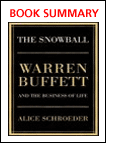But is it? CAS has current assets of $520 million (using FIFO inventory) and total liabilities of $310 million, for a difference of $210 million. At the same time, the company only trades for $210 million as well, giving investors downside risk protection in the form of inventory and A/R. After buying current assets minus all liabilites at their book values, current investors are also acquiring the company's fixed assets and future earnings for free!
While this stock gets ignored by the mainstream finance industry, it appears to offer value investors the opportunity to buy in at a cheap price. As Warren Buffett told us when we met with him last year, he loves volatility as that's what allows him to profit from mispricings in the market!
Last week, CAS cut its dividend and reported profits lower than expected, resulting in a 20% drop in its stock price. With its flexible cost structure and net tangible assets greater than its current market value, this may represent another opportunity for value investors looking to take advantage of this stock's volatility.
Interested in another perspective on CAS, or any other stock that's currently on your mind? One of our sponsors, MarketClub, has offered our readers a free analysis of a stock of their choosing.
Disclosure: Author has a long position in shares of CAS








